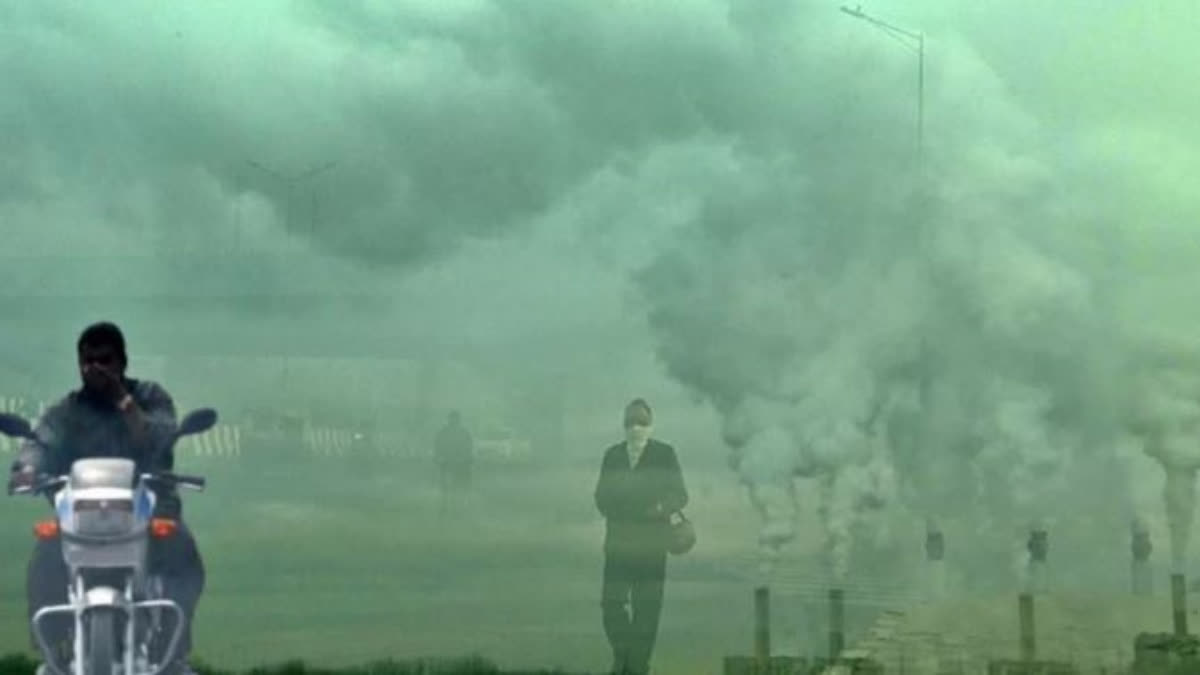New Delhi: A toxic haze engulfed parts of the national capital as air pollution has been on constant rise with Diwali being over a week away. The AQI at Anand Vihar area of Delhi has dropped to 454 recorded at 8:30 am, putting it under the 'Severe' category. The AQI at Dwarka, sector-8, has fallen to 311 at 8:30 am, marked under the 'Very Poor' category.
The AQI at ITO in the national capital stood at 232 at 8:30 am, marked under the 'Poor' category. Jahangirpuri has recorded AQI at the mark of 350 at 8:30 am, putting it under the 'Very Poor' category. The AQI has been recorded at 254 at Nehru Park and surrounding areas, marked under the 'Poor' category. "The weather is cold in Delhi and pollution has increased... People should wear masks as the pollution has increased in the national capital," said a Delhi resident.
Notably, as per the Central Pollution Control Board, the AQI, when marked under the 'Severe' category, can possibly affect healthy people and seriously impact those with existing diseases. AQI, when under the 'Poor' category, can cause breathing discomfort to most people on prolonged exposure, whereas, when under the 'Very Poor' category, it can cause respiratory illness on prolonged exposure.
AAP-BJP slugfest over pollution
Delhi Chief Minister Atishi on Sunday said one of the biggest contributors to pollution in the Anand Vihar area is the influx of buses from other states, adding the Delhi government will engage with the Uttar Pradesh government to implement anti-pollution measures at their bus depot near the national capital.
She made these remarks while inspecting pollution control measures at the Anand Vihar bus depot along with Environment Minister Gopal Rai. Highlighting the issue, Atishi said, "Anand Vihar, which lies on the Delhi-UP border, remains a hotspot where AQI levels are the highest. This area sees a large influx of buses from outside Delhi, and there is also the Kaushambi bus depot nearby. While Delhi runs CNG and electric buses, the Kaushambi bus depot receives diesel buses. We plan to engage with the UP government to implement pollution control measures there as well.
Constructions by the NCRTC and RRTS has also contributed to pollution levels in the area, she said, adding the Delhi government is utilising all available resources, including 99 teams for dust control and over 315 smog guns, to mitigate the issue.
"Smog guns are operating constantly in this area, and the roads are being kept wet to control dust. All roads have been repaired, and congestion points have been cleared to ease traffic flow," Atishi said. Atishi also addressed the issue of pollution in the Yamuna, accusing the Haryana and UP governments of releasing untreated effluent into the river.
"During the Chhath festival, they shut their Agra Canal, diverting their untreated waste towards Delhi. However, we remain solution-oriented. That is why we are using food-based silicone defoamers, and the Delhi Jal Board is conducting a defoaming drive to tackle the problem. Even if others try to disrupt our efforts, we will continue working towards a cleaner Yamuna," she said.
Environment Minister Gopal Rai pointed out that air quality fluctuates significantly late at night and early in the morning, coinciding with the arrival and departure of buses.
"The AQI is especially bad at these times, and the major reason appears to be the presence of two depots -- one at Anand Vihar in Delhi and the other at Kaushambi in UP. While buses in Delhi are now running on CNG and electric, a large number of diesel buses from UP still operate at these depots. The smoke from these buses is impacting the air quality," he said.
Rai urged the UP government to adopt similar pollution control measures, saying a coordinated approach is required to yield positive results. With the rise in pollution level, toxic foam has been evidently visible on the Yamuna River in the Kalindi Kunj area of Delhi for the last few days.
Earlier on Saturday, BJP national spokesperson Shehzad Poonawalla reached Yamuna bank in the Kalindi Kunj area and launched a blistering attack against the Aam Aadmi Party, saying that it is the poisonous politics of Arvind Kejriwal that has made the water and air in the national capital poisonous. He further challenged Kejriwal to come along with his party's leaders and take a dip in the Yamuna River.
Poonawalla said that the Yamuna water has turned into poison. Arvind Kejriwal claimed that he would clean Yamuna till 2025. They previously said 2020; then they claimed 2025. Now if the situation is such before Chhath Puja, the women who will come here will have to suffer so many diseases. Yamuna River has been polluted because the fund that was allocated for the cleaning of Yamuna River has been spent by Arvind Kejriwal for advertisements and on himself.
Countering the BJP, AAP leader and Delhi Environment Minister Gopal Rai hit out at the BJP for not taking adequate steps to resolve the air pollution. On the deteriorating Air Quality Index in the National Capital, Rai said that collective efforts are required to tackle the crisis. Rai said that all the governments of the BJP in the states and the centre are sleeping. "The pollution is increasing and the BJP is not ready to do anything. There is a BJP government in UP, Haryana and Rajasthan; they are sleeping and are inactive. There is the BJP in the centre; they are sleeping... No one is questioning them and on the other hand, the BJP leaders are into gimmicks... Pollution is a serious problem. All of us have to work together in cooperation with each other." (With agency inputs)



